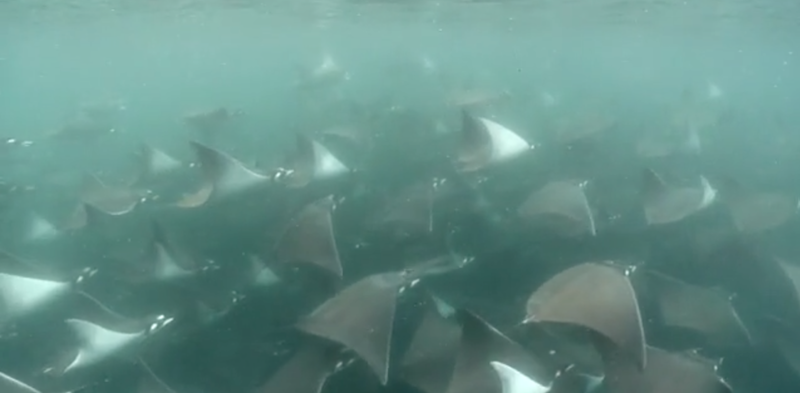Just one month after an uplifting update on the success of the Cabo Pulmo Marine Reserve in Mexico, a huge potential blow the fragile reserve is brewing with word of a new Cancun-style resort that has “all but final approval” by the Mexican government.
The Mexican government is standing by the statement the resort will have no impact on the marine reserve despite being just three miles up the coast.
The proposed resort will have an impact — three golf courses, a 490-slip marina, a jetport, 15 hotels and numerous condos, equivalent to 30,692 hotel rooms or 10,230 three-bedroom condos or houses – all being constructed over the next three or four decades. Sure the economic well being of the area welcomes the influx of contruction and tourism money but the impact of a healthy marine ecosystem is more important.
[vimeo width=”680″ height=”383″]http://vimeo.com/27379232[/vimeo]
When the reserve began in 1999, the area was heavily depleted by fishing and only medium size fish were left. Strict enforcement of new rules as a marine reserve with critical enforcement by local families, boat captains and dive masters along with protection of spawning areas for large predators were essential to rebounding fish populations. As 3Reef pointed out last month, the recent results of a 10-year analysis of Cabo Pulmo published in PLoS Journal suggest a 460% increase in fish in the reserve.
It is not only the fish in the preserve as the coral reefs in Cabo Pulmo reefs hold 11 of the 14 species of coral found in the Sea of Cortez and its regular inhabitants include five of the world’s seven endangered species of sea turtles. Oceanographers are seeing amazing results with marine biologist Marco Octavio Aburto-Oropeza said he flew in an ultra-light aircraft earlier this year and spotted a congregation of sharks in the reserve.
“There were up to 200 sharks in a small part of the reef. It was unbelievable. In my 20 years of diving in the gulf, I hadn’t seen anything like that,” he said. On a recent dive, he witnessed “a group of about 20 large fish, groupers and snappers, eating a bunch of grunts that were between 50 and 70 centimeters,”a foot and a half to more than 2 feet long. It was an incredible spectacle.”
The marine park, which was named a UNESCO World Heritage Site in 2005, was clearly one of the reasons that Hansa Urbana, the development company based in Alicante, Spain, chose in to plan this major tourism development in Baja California 2007. Cyclone fencing surrounds much of its 15.4-square-mile site, and no ground has yet been broken.
We are not sure there is much we can do but if any of our readers have information on agencies in the Mexican government concerned hobbyists may petition to reconsider, please post in the comments below.
Thanks to Matt at 3Reef for the heads up on this story.




